Perfecting your SAT grammar tips is not just about getting a high score—it’s about making sure you feel confident. As you prepare for the exam, you might be looking for some guidance. Look no further. This blog will explore the best strategies to help you ace your SAT. You’ll find all sorts of tips for mastering the SAT, from the top grammar rules to unique ways to navigate the writing test. By the time you’re finished reading, you’ll feel more than ready to tackle the real thing, SAT tips and all.
The SAT Reading And Witing Structure

Let’s dive into the details of Reading and Writing on the SAT. You will need to understand two main types of questions: those that improve the expression of ideas and those that recognize and correct errors in structure, grammar, usage, and punctuation. When you are working on the second type of question, you are essentially going over “Standard English Conventions.”
This means you address issues like recognizing and fixing grammar, usage, and mechanics problems in passages. By mastering these common grammatical rules, you will be better able to tackle these questions and the Reading and Writing section as a whole. Keep in mind that sharpening your skills in this area will also enhance your reading comprehension and writing abilities, which can be beneficial for other tests you might take.
Related Reading
Why Good Grammar Matters On The SATs

The most obvious reason good grammar matters on the SAT is that a considerable portion of the exam tests your grasp of standard English language conventions. This multiple-choice section of the SAT requires you to detect and correct several grammatical errors that appear in provided passages.
Mastering SAT Grammar for Exam Efficiency
By studying SAT grammar rules, you will perform better on this grammatical section of the exam, along with other parts of the reading and writing sections. Considering that each exam component has an allotted time limit, a near-instant knowledge of English grammar can help you focus on other, more challenging aspects of the SAT questions.
Maximizing Time with Interdisciplinary Writing Questions
This is especially useful since a notable portion of the writing questions are interdisciplinary, relating to science, the humanities, history, and social studies. By reading the provided passages right the first time, you give yourself more time to think critically about executing the comprehension questions.
Write, Study, And Research 10x Faster For Free With Conch AI
Studying new material isn’t easy but tedious, time-consuming, and repetitive. Conch steps in so you can focus on learning. With Conch, you can upload your course material (Upload class notes, documents, lectures, videos, and more) and generate studysets live (Record your lectures, meetings, presentations, or interviews to watch notes and flashcards generate live).
Guaranteed Detection-Free Essay Writing
At Conch, we guarantee that there’s a 99.99% that you won’t get caught after using our tool. If you use ConchAI to write your essays you will be undetected by algorithms like GPTZero and TurnItIn. With Conch, you can write your essays 10x faster, AI detection-free. Our tool helps you add citations, it helps you rewrite content so that it’s undetectable by AI, and so much more, all to protect students’ time and let them focus on actually learning the content!
Streamlining Student Life with Conch’s AI Tool
So Chegg users, High School and college students, and anyone writing papers, use Conch to make your student life easier and bypass AI detection tools with ease. Conch has over +1 million users to date and growing.
Sign up and use Conch’s AI Essay writer and Study for free for free today.
15 Must-Know SAT Grammar Tips And Rules Before Your Test

1. Pronouns need to agree with their antecedents
If the antecedent is plural, then the pronoun referring back to it must also be plural. If the antecedent is singular, then the pronoun referring back to it must be singular.A pronoun is a word such as it, she, or them that stands in for and refers back to a noun (called an antecedent).
Example
The Venus flytrap’s “jaws” only close when it senses contact from prey.
Explanation
The antecedent is The Venus flytrap, which is singular, so the singular pronoun it should be used—not the plural pronoun they.
2. Possessive pronouns and contractions need to be written correctly
Apostrophes in pronouns represent contractions, so it’s means “it is” and they’re means “they are.” Its and their are possessive pronouns, meaning “belonging to it” and “belonging to them,” respectively. You may be tested on the difference between its and it’s versus their and they’re (or other pronouns with apostrophes).
Example
The store opened its doors on January 1st.
Explanation
The pronoun refers back to The store , which is singular, so a form of it and not a form of they should be used. Then, a possessive pronoun is needed because the phrase is referring to the doors of the store, so the correct spelling is its .
3. Plural and possessive nouns need to be properly punctuated
To make a regular plural noun possessive, add an apostrophe after the plural – s or – es. To make an irregular plural noun possessive, add an apostrophe + – s.
Most nouns add an – s or – es to become plural. Some, such as children or people, are irregular plurals and don’t end in – s. To make a singular noun possessive, add an apostrophe + – s.
Example
Put the students’ projects on top of the lockers.
Explanation
The sentence refers to the projects of multiple students, so keep the word students plural and add the apostrophe after to show that the projects belong to them. The word projects is plural, so it ends with – s, but nothing belongs to the projects, so that word doesn’t need an apostrophe.
4. With modifiers, the person or thing being modified needs to come as close as possible to the modifier
Look for a phrase at the beginning of a sentence that is followed by a comma.
Example
Using the results of the study, the research team was able to come to a conclusion.
Explanation
The research team used the results of the study, so that’s what should come after the comma. If the word conclusion had come after the comma, the sentence would be incorrect because a conclusion can’t use something.
5. Use the Correct Idiomatic Expression
Idiom questions can be challenging because they don’t conform to specific rules. You have to rely on your knowledge of specific phrases and standard English conventions to answer these questions correctly. In most idiom questions on the SAT, you’ll be asked to determine which preposition to use in a given sentence.
Check out this example sentence with a prepositional idiom error:
Incorrect
After getting suspended, Herbert decided to focus at improving his behavior.
Correct
After getting suspended, Herbert decided to focus on improving his behavior.
There is no rule to learn to help identify this error, but the correct expression is “focus on.”
6. Commas Can’t Separate Two Complete Thoughts
A comma splice is when two independent clauses, or complete thoughts, are separated by a comma, and comma splices create a grammatical error known as a run-on sentence. A run-on sentence occurs when two or more independent clauses aren’t separated by the correct punctuation.
Here’s an example of a comma splice:
Ben likes Rihanna, she is his favorite singer.
The clauses before and after the comma are complete thoughts that could stand alone as sentences. There are a few ways to correct a comma splice. You can put a conjunction after the comma:
Ben likes Rihanna, and she is his favorite singer.
Also, you can put a relative pronoun after the comma:
Ben likes Rihanna, who is his favorite singer.
You can use a semicolon to correctly separate two complete thoughts:
Ben likes Rihanna; she is his favorite singer.
7. Semicolons Separate Two Complete Thoughts
Semicolons function like periods; they separate two independent clauses. You should be able to replace semicolons with periods. On the SAT, you may find a randomly placed semicolon, or you may need to replace a comma with a semicolon to fix a comma splice. Here are example sentences with semicolons used correctly and incorrectly:
Incorrect
Because Teresa wanted to please her family; she became a doctor.
Correct
Teresa wanted to please her family; she became a doctor.
The second sentence is correct because the clauses on both sides of the semicolon are independent and could stand alone as sentences.
8. A verb must be in the correct tense based on clues in the text
If the sentence is describing something that will happen, then you need a future tense verb. If the sentence refers to something that has already happened, then you need a past tense verb.
How do you know whether the sentence is describing a past, present, or future event? Look for clues, such as other verbs and references to time.
Example
I was eating a snack when my cousin called me.
Explanation
The verb called is in the past tense, and the word when suggests that the snack-eating happened at the same time, so the verb “to eat” needs to be in the past tense.
Was eating is more appropriate than other past tense verbs (such as ate or had eaten ) because the word when in this context means that the first event was in progress when the second one happened.
9. A Colon Must Come After an Independent Clause
Colons are usually used to introduce lists or explanations. The key rule for colons is that they must come after a complete sentence. If you end the sentence where the colon is placed, the sentence should make sense and be a complete thought.
Incorrect
Meena enjoys multiple genres of music like: alternative, rap, heavy metal, and country.
Correct
Meena enjoys multiple genres of music: alternative, rap, heavy metal, and country.
The first sentence is incorrect because the part of the sentence that comes before the colon isn’t a complete thought.
10. Use Apostrophes Correctly to Form Possessives
The SAT tests you on how to use apostrophes to correctly form possessives. Luckily, the rules for forming possessives are pretty straightforward. If the word is singular or plural but doesn’t end in “s,” then you add an “s” after the apostrophe to form a possessive.
Here are a couple of examples:
I shall be paying a visit to the men’s restroom.
My computer’s monitor is rather dirty.
To create a possessive for a plural word that does end in “s,” just add an apostrophe after the “s.” Check it out:
Juan thinks his parents’ rules are too strict.
Also, only use apostrophes for possessives or contractions. Contractions are formed when you combine two words. Examples include it’s (it is), don’t (do not), and isn’t (is not). Don’t use apostrophes to create plural nouns.
Learn more about punctuation in this course by Khan Academy.
11. Subjects and verbs must agree
Every sentence has a verb (an action word or a state of being, such as “reveal” or “were”) and a subject for that verb (the one doing the action). Watch out for words between the subject and the verb that could be used to trick you.
Example
The teacher with the green shoes lives in my neighborhood.
The teacher lives in my neighborhood, not the shoes , so the subject is teacher . This word is singular, so the singular verb lives is used. Don’t be tricked by the plural noun shoes that comes right before the verb. It’s not the subject.
12. Each Word Should Make Sense in Context
Much to the joy of test-takers everywhere, the dreaded vocabulary section present on old SAT tests is gone for good. While this means you don’t need to memorize five hundred obscure words a day, you still need to have a good understanding of medium-difficulty words.
The SAT Writing and Language Test employs word choice questions that will challenge your knowledge of things like homophones (words that sound similar, but have different meanings) and words that have multiple definitions. Be sure to take some time in your SAT Writing prep to study essential words and commonly used homophones.
For homophone questions, the sentence will usually read something like:
There are a number of dogs without there collars.
A) NO CHANGE
B) There, their (Correct Answer)
C) Their, there
D) They’re, their
For word choice questions, the sentence will usually look like:
Although fitness advocates preserve that the supplement is beneficial, the FDA has yet to release positive results.
A) NO CHANGE
B) sustain
C) maintain (Correct Answer)
D) endure
13. Avoid Sentence Fragments
Each sentence must at least communicate a single complete thought. A sentence fragment is an incomplete thought represented as a single sentence. There are a couple of ways to mistakenly create a sentence fragment. Our top SAT grammar tip is to identify a sentence that has no subject, like the following:
Michael took a flight to London. And then a train to Paris.
The second sentence in this example is a sentence fragment since it does not reference its subject — in this case, Michael. Instead, the example should either include Michael as the subject of the latter sentence or simply make one sentence out of the two by erasing the period in the middle.
An incomplete verb can also create a sentence fragment. In such a sentence fragment, there is only a subject and verb, which fails to create a complete thought.
For example:
Michael becomes.
This sentence fragment makes no sense since “becomes” is a verb that requires more information to create a complete thought.
14. Beware the Run-On Sentence
To understand run-on sentences, you must first understand compound sentences. A compound sentence has more than one independent clause—meaning two subjects and two verbs. If independent clauses aren’t joined together correctly, you’ll end up with a run-on sentence.
Incorrect
The puppy will learn to sit eventually you need to keep taking her to puppy class.
Here we have two independent clauses (“The puppy will learn to sit eventually” and “you need to keep taking her to puppy class”) that aren’t joined together correctly. Run-on sentences can be fixed or prevented by:
Joining the independent clauses with a comma and a coordinating conjunction (for, and, nor, but, or, yet, so).
Correct
The puppy will learn to sit eventually, but you need to keep taking her to puppy class.
Or dividing the clauses into two sentences.
Correct
The puppy will learn to sit eventually. You need to keep taking her to puppy class.
Or inserting a semicolon between the two clauses (for more on semicolons, see below).Correct: The puppy will learn to sit eventually; you need to keep taking her to puppy class.
We tend to think of run-on sentences as being long and wordy, and they can be! Shorter sentences can also be classified as run-ons if the independent clauses aren’t joined correctly.
15. Who vs. Whom, Who’s Vs. Whose, That vs. Which
While mastering general grammatical rules is important, it is also worth your time to focus on a few specific rules. Figure out which common grammar mistakes tend to stump you, and memorize the rules.
Who vs. Whom
Who is the subject of a sentence, whereas whom is the object of a sentence.
Example: Who owns this toy?
Example: To whom should I give this squeaky toy?
Who’s vs. Whose
Who’s is a contraction of who is, whereas whose is the possessive form of who.
Example: Who’s the dog’s owner?
Example: Whose dog is this?
That vs. Which
That introduces a clause that adds necessary information to a sentence, whereas which introduces a clause that adds detail but isn’t necessary to the overall meaning of the sentence.
Ex: The sandwich that has the homemade pickles is my favorite!
Example: This sandwich, which has homemade pickles, is delicious!
SAT Grammar Tips For Pepping & Choosing The Correct Answers

During the SAT Writing and Essay sections, demonstrating an understanding of grammar rules can have a significant impact on your score. Here, I provide some tips to help you prepare for test day and select the correct answer for each question.
1. Understanding Grammar Rules
It is essential to familiarize yourself with grammar rules, as they can play a crucial role in both the Writing and Essay sections of the SAT. While you may not need to memorize the rules verbatim, practicing with correct and incorrect sentences can help you grasp the concepts better.
2. Utilizing Reliable Sources for Practice
To improve your grammar skills, read professionally proofread content from reputable sources such as major national newspapers, magazines, and books.Be cautious about using dialogue from books, as authors may intentionally use ungrammatical language to enhance the characters’ authenticity.
3. Tips on Choosing the Correct Answer
When answering SAT Writing questions, the first option is usually NO CHANGE. This choice is correct just as often as the others, so consider it carefully. You may encounter the option to DELETE the underlined portion, which can be the right choice in some cases.
4. Avoiding the “Sounds Right” Trap
While choosing the answer, refrain from selecting what “sounds right,” as this can be misleading. Despite certain phrases sounding appropriate, they may not be grammatically correct. For example, “could of” is a common mistake that may sound right but is not a correct expression.
5. Avoiding Introduction of New Errors
When correcting a mistake, ensure you are not introducing new errors, such as wordiness. Carefully review all answer choices to determine the most appropriate one for the given situation.
6. Analyzing the Underlined Part of Speech
Identifying the underlined part of speech can provide clues about the question’s focus. For instance, if a preposition is underlined, you may be dealing with an idiom, while an adverb may require you to check the modifiers.
By following these SAT grammar tips, you can enhance your understanding of grammar rules, prepare effectively for test day, and choose the correct answers with confidence.
Complete Step-by-Step Guide on How To Use Conch AI To Ace Your Classes (Efficient Writing, Studying, Note Taking, and More!)
What are you Writing Today?
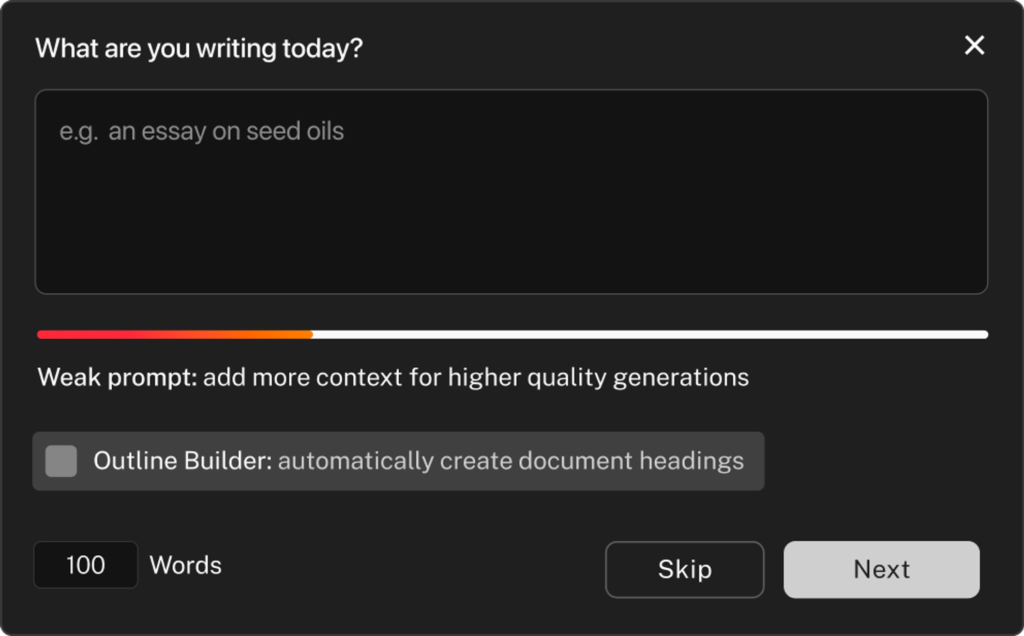
You can think of this console as the ideation station, or ChatGPT but made for writing essays. Here, you can define a prompt for your initial draft. You can also assign a general word count for how long you want the generation to be and even automatically generate an outline with headings within your essay.
Visit this page to learn more about our AI Essay Writer.
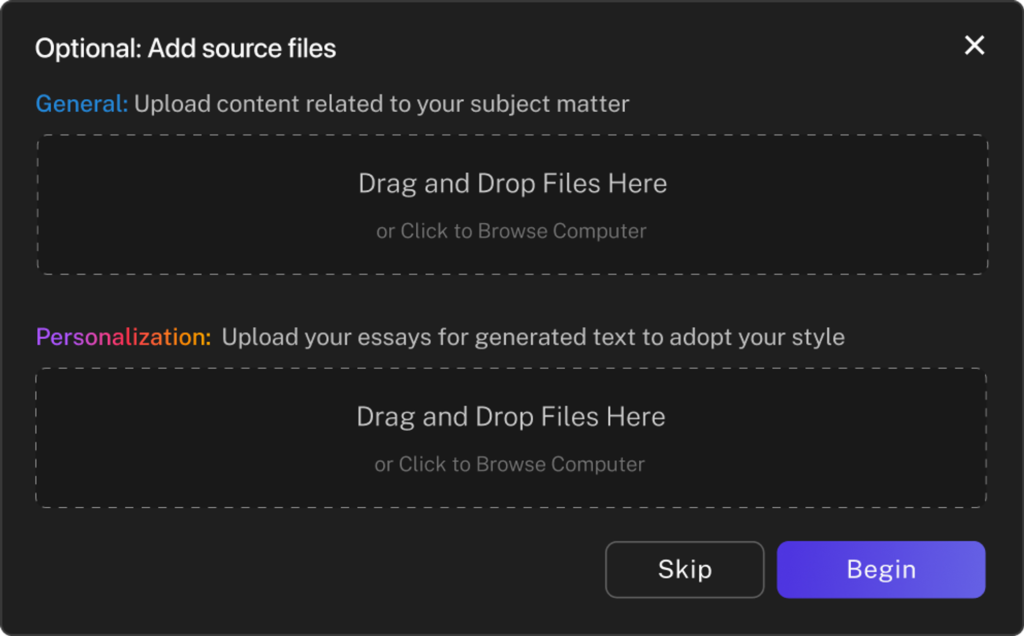
What’s new? You can now even upload source files that determine the content of your initial generation, as well as any past essays/writing samples so generations are in your writing style (Personalization).
Visit this page to learn more about how you can mimic your writing style.
Conch Commands
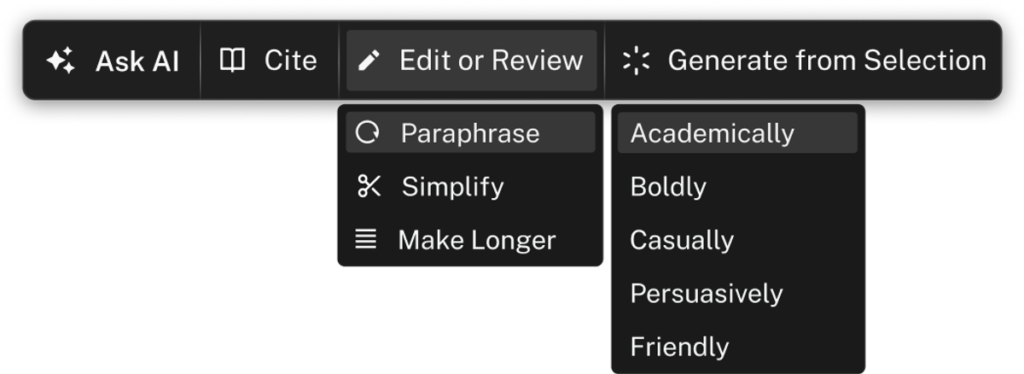
Simply highlighting text will bring up a modal that lets you ask Conch to do anything to the highlighted text from citing with actual research, paraphrasing/rewriting, generating a summary, and more. The possibilities are really endless with the AI commands, but we’ve given you some of the most used ones.
Visit this page to learn more about our AI Outline Generator.
Autocomplete

Don’t have any ideas? Just stop typing for a few seconds and Conch will prompt you to generate your next sentence based on what you have written. You can also use one of our commands: command ⌘ (ctrl on Windows) + shift + Q.
Visit this page to learn more about our AI Outline Generator.
Humanize AI-Written Text with Conch
Check for AI and Humanize
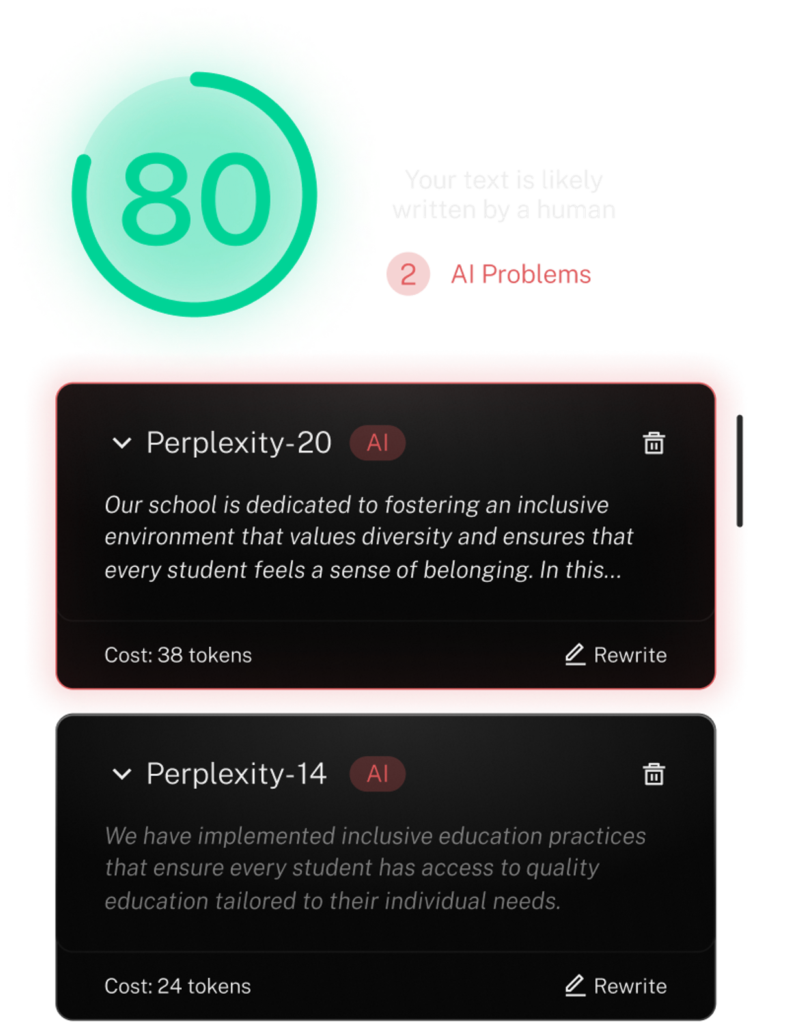
This one’s pretty simple, but one of our most popular features. All you need to do is either click Enhance while in the app dashboard or Check for AI while in write mode. Conch will check for AI detection using some of the top algorithms (GPTZero, TurnItIn, etc.) – you’ll then be prompted to humanize your text. Enhance bypasses 99.99% of AI detectors!
Visit our Enhance page to learn more about our Undetectable AI feature.
Research and Study 10x Faster with Conch
Cramming for a quiz or test? Need to pull insights from a document? Just upload any file (doc, pdf, etc.), YouTube link, or even live record a lecture to:
Generate Notes and Flashcards
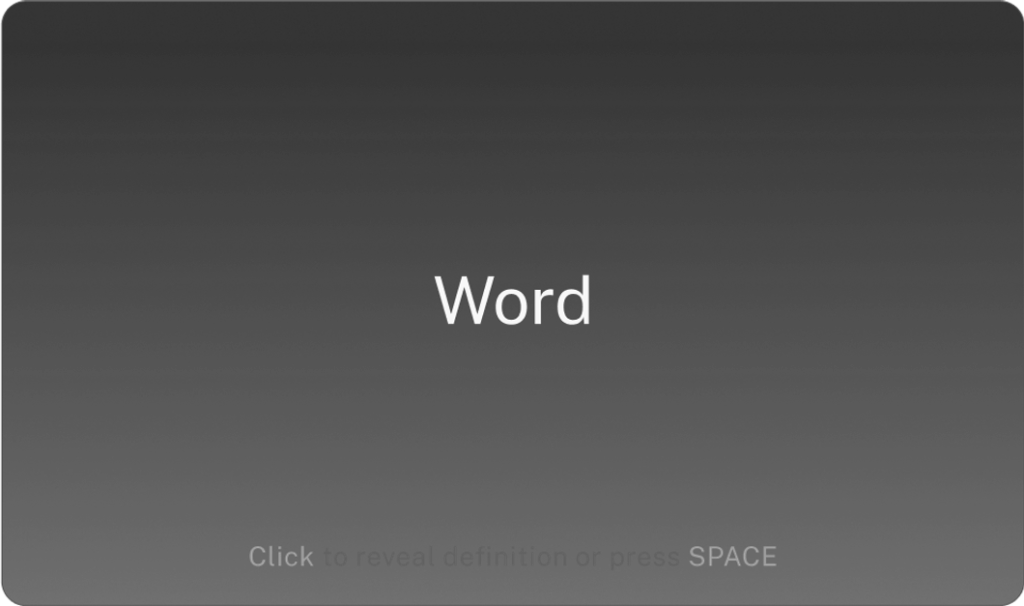
Say hello to the latest addition to Conch where you can create study sets (flashcards and notes) from virtually any file. Upload anything from a textbook to your class notes to a video recording and quickly create easy-to-use, intuitive studying material. Coming soon: You’ll be able to share and find others’ study sets publicly.
Visit our landing page to learn more about how you can chat with any file, auto-generate notes, as well as auto-generate flashcards.
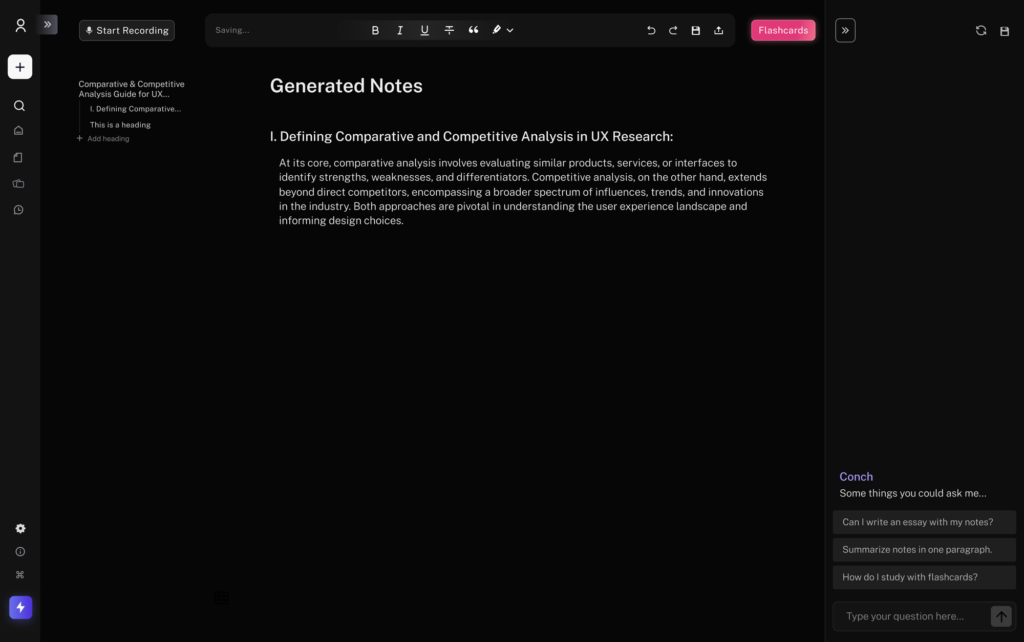
Chat and Analyze

In addition to study sets, you’ll be able to ask Conch questions about the file so you can uncover insights faster. Chat will also follow you around and dynamically adjust based on what mode you’re using Conch in (write, enhance, study), so you basically have an assistant wherever you go when you’re using Conch.
Visit our Chat page to learn more about how you can chat with any file.
Do You Have Any Questions?
Discovered a major bug or experiencing an issue, or need help using a certain feature, shoot as an email.
Related Reading
- How To Study For The Sat
- Sat Reading Tips
- Sat Essay Prompts
- Sat English Tips
- How To Ace The Sat
- Digital Sat Tips
- Sat Math Topics
- Good Sat Score Range
- Sat Math Tips
- Sat Math Formulas
- Sat Math Section
- Sat Writing Tips
- Sat Vocabulary Flashcard
- Sat Reading And Writing
- Ai Sat Prep
- Tips for SAT
- SAT Tips and Tricks
- Last Minute SAT Tips
- Sat Essay Tips
- SAT Study Tips
Write, Study, And Research 10x Faster For Free With Conch AI

Studying new material isn’t easy but tedious, time-consuming, and repetitive. Conch steps in so you can focus on learning. With Conch, you can upload your course material (Upload class notes, documents, lectures, videos, and more) and generate studysets live (Record your lectures, meetings, presentations, or interviews to watch notes and flashcards generate live).
Ensuring Academic Integrity with ConchAI
At Conch, we guarantee that there’s a 99.99% that you won’t get caught after using our tool. If you use ConchAI to write your essays you will be undetected by algorithms like GPTZero and TurnItIn. With Conch, you can write your essays 10x faster, AI detection-free. Our tool helps you add citations, it helps you rewrite content so that it’s undetectable by AI, and so much more, all to protect students’ time and let them focus on actually learning the content!
Simplifying Student Life with ConchAI
So Chegg users, High School and college students, and anyone writing papers, use Conch to make your student life easier and bypass AI detection tools with ease. Conch has over +1 million users to date and growing.
Sign up and use Conch’s AI Essay writer and Study for free for free today.

Leave a Reply